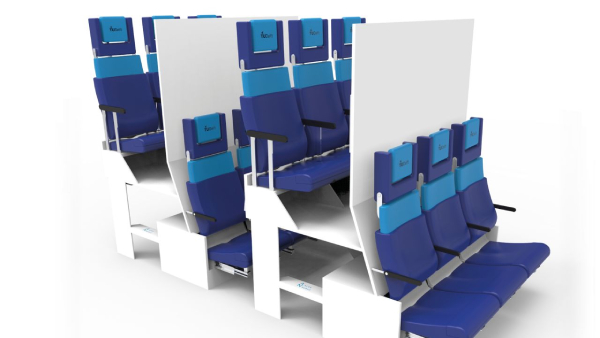
Thirty thousand new product launches happen each year, and 95% of them fail. That may not be a very good statistic, especially if you are running your own business. Considering that a lot of investment goes into research, product development, marketing, advertisements, promotional events, and sales, no business wants a product that no one wants.
As a business owner, you want your product and its release to be perfect and a raging success with your target audience. For that very reason, many businesses now turn toward concept testing. Product concept testing allows you to ask your audience what they feel about your new product or service. It can also be used for testing product features, price points, and any promotions that you are planning to implement.
What is product concept testing?
Product concept testing is a research method that involves asking your customers or target audience what they feel about the concept of a product or service before launching it. It allows you to gauge whether your customers like the concept and are willing to buy your product or service.
Concept testing is not meant to be a replacement for the ideation process of your product development process, and instead, it is about testing the basic ideas that come out of the ideation phase.

Product concept testing helps you identify the following:
- Effectiveness of your concepts
- Effectiveness of your messaging and advertisements
- Identify the strengths and weaknesses of your concept
- Align your concepts with your brand
- Figure out hidden benefits of your concepts
Why is concept testing important?
Product launches are fraught with risks. According to Mckinsey, 50% of product launches don't hit their targets. Many products fail because companies often do not do the necessary pre-work. Most of that pre-work includes testing and perfecting product concepts.

Ford Edsel is a classic example of how product concept testing could have prevented failure. In 1958, Ford launched the Ford Edsel, hoping to have created the new premier car for middle-class Americans. Ford was so confident about the car that it invested $250 million into it. The company did run many consumer polls, but they paid no attention to the research. Although they ran a hype-filled marketing campaign, it did not stop the Ford Edsel from failing miserably. The car was priced too high and revolutionary features, such as electric controls and Teletouch transmission, were unreliable. Customers could not relate to the car, and Ford ended up losing nearly $350 million.
Ford may have got it wrong, but Yamaha and Chobani leveraged concept testing to deliver world-class products.
Yamaha was trying to decide between sliding faders and knobs when designing their popular Montage keyboard. They tested it with actual musicians who opted for the sliding faders.
Similarly, Chobani created Chobani Oats as a meal on the go in Australia. They tested the product several times, including changing the packaging and fixing the cap on the pouch. Today, Chobani is one of the top yogurt brands in Australia.
What are the benefits of concept testing?
You have come up with a product idea, and you think it is genius. But what if your target customers don't like it? Concept testing helps you test out your ideas before releasing them to your customer base. If your customers don't like the product during testing, there is no point putting it through mass production. Concept testing can help you avoid launching ineffective products and campaigns.
Another benefit of product concept testing is flexibility. In most cases, testing involves collecting feedback, so you can ask your customers almost anything about your idea. You could ask them about the design of your product, the price, and so much more. With concept testing, you can perfect every small detail before you launch the final product.

Concept testing methods
Here are a few concept testing methods:
Single concept evaluation
Single concept evaluation involves testing out a concept in its entirety. Participants learn about all the features of a product and then decide whether they like it or not. It is a quick and impartial method, giving you detailed results and a high response rate.
Multi-concept evaluation
Unlike a single concept evaluation, a multi-concept evaluation assesses multiple concepts in a single session. Participants evaluate one concept and then move on to the next. It is a cost-efficient method since businesses can test out several concepts at once. The downside is that participants may get tired, eventually giving slower and less-passionate responses.
Concept Selection
In this method, participants are given two or more concepts to analyze. They pick out the concept that they like best. Although it does not give very detailed results, it helps businesses determine which concepts are liked best and the popularity of related ideas.

Concept Selection
In this method, participants are given two or more concepts to analyze. They pick out the concept that they like best. Although it does not give very detailed results, it helps businesses determine which concepts are liked best and the popularity of related ideas.
Concept Selection and Evaluation
This method is what you get when you combine Concept Selection and Single Concept evaluation. Participants pick out the concept that they like the best and then analyze the entire concept. It is a time-consuming process, but it gives your company in-depth insight into your customers' preferences.
Monadic testing
For testing a product idea using monadic testing, the participants are divided into multiple groups. Every group is shown a concept, and then the group uses a single concept evaluation. Since each group is only dealing with a single concept, it is easier to go into details without making the survey lengthy.
Monadic test surveys are short and allow you the flexibility to ask multiple follow-up questions.
Sequential monadic testing
In sequential monadic testing also, the participants are divided into smaller groups. The difference is that each group is not shown a single concept, but they get to see all the concepts. However, the order of the concepts is often randomized to avoid bias.
Since all the concepts are presented to the groups, a sequential monadic testing survey can be quite lengthy. You could shorten the survey by limiting the number of questions, but you may not get in-depth insight.
Protomonadic testing
In this method, a sequential monadic test is followed by a concept selection. Participants look at all the concepts and then pick the concept they most prefer.
Protomonadic testing is useful for validating the sequential monadic test outcomes. You can verify if the concept selected in concept selection is compatible with the insight collected for each concept.
Conclusion
If you are a product manager or a business owner, market research and concept testing must be a part of your product development process. Testing your concept can help you optimize your products and services. Concept testing is a cost-efficient solution to test products and avoid costly consequences. When done right, concept testing can help you save time, money, and effort.
Do you want to test your products with potential customers before launching them? Need more information on concept testing. Talk to Pro-Dev today.














































